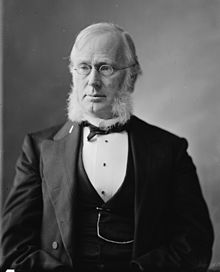
Daniel Chester French was an American sculptor of the late nineteenth and early twentieth centuries. He is best known for his 1874 sculpture The Minute Man in Concord, Massachusetts, and his 1920 monumental statue of Abraham Lincoln in the Lincoln Memorial in Washington, D.C.

George Frisbie Hoar was an American attorney and politician who represented Massachusetts in the United States Senate from 1877 to 1904. He belonged to an extended family that became politically prominent in 18th- and 19th-century New England.

Samuel Hoar was a United States lawyer and politician. A member of a prominent political family in Massachusetts, he was a leading 19th century lawyer of that state. He was associated with the Federalist Party until its decline after the War of 1812. Over his career, Hoar developed a reputation as a prominent Massachusetts anti-slavery politician and spokesperson. He became a leading member of the Massachusetts Whig Party, a leading and founding member of the Massachusetts Free Soil Party, and a founding member and chair of the committee that organized the founding convention for the Massachusetts Republican Party in 1854.

Sleepy Hollow Cemetery is a rural cemetery located on Bedford Street near the center of Concord, Massachusetts. The cemetery is the burial site of a number of famous Concordians, including some of the United States' greatest authors and thinkers, especially on a hill known as "Author's Ridge."

Ebenezer Rockwood Hoar was an American politician, lawyer, and jurist from Massachusetts. He served as U.S. Attorney General from 1869 to 1870, and was the first head of the newly created Department of Justice. Hoar assisted President Ulysses S. Grant in appointing two United States Supreme Court justices and was himself nominated to the Court. His nomination was rejected by the United States Senate, in part for his positions on patronage reform. In 1871, Hoar was appointed by Grant to the United States high commission that negotiated the Treaty of Washington between the U.S. and the United Kingdom, helping to settle the Alabama Claims.
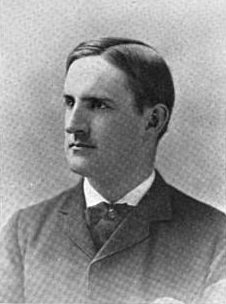
Sherman Hoar, was an American lawyer, member of Congress representing Massachusetts, and U.S. District Attorney for Massachusetts. As a young man he was the model for the head of the John Harvard statue now in the Harvard Yard.
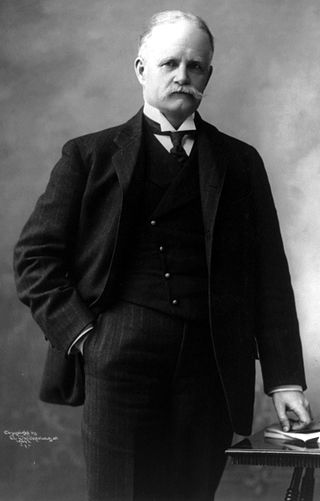
Rockwood Hoar was a Representative from Massachusetts, the son of Massachusetts US Senator George Frisbie Hoar.
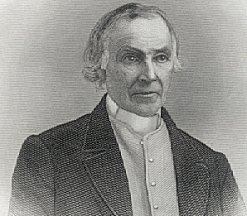
John Denison Baldwin was an American politician, Congregationalist minister, newspaper editor, and popular anthropological writer. He was a member of the Connecticut State House of Representatives and later a member of the U.S. House of Representatives from Massachusetts.

William Whitney Rice was a U.S. Representative from Massachusetts.
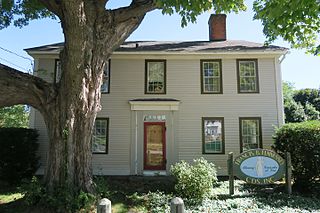
The John Spurr House is an historic house on Main Street in Charlton, Massachusetts. The house was built in 1798 and added to the National Historic Register in 1976.
The 1877 United States Senate election in Massachusetts was held in January 1877. Incumbent Republican Senator George S. Boutwell, who had won a special election for the remainder of Henry Wilson's term, was defeated by reformist U.S. Representative George Frisbie Hoar.
The 1895 United States Senate election in Massachusetts was held in January 1895. Incumbent Republican Senator George Frisbie Hoar was re-elected to a fourth term in office.
The 1901 United States Senate election in Massachusetts was held in January 1901. Incumbent Republican Senator George Frisbie Hoar was re-elected to a fifth term in office.

The Minute Man is an 1874 sculpture by Daniel Chester French in Minute Man National Historical Park, Concord, Massachusetts. It was created between 1871 and 1874 after extensive research, and was originally intended to be made of stone. The medium was switched to bronze and it was cast from ten Civil War-era cannons appropriated by Congress.
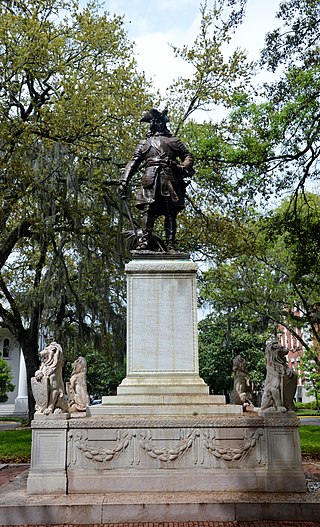
The James Oglethorpe Monument is a public monument in Chippewa Square, Savannah, Georgia, United States. The monument honors James Oglethorpe, the founder of the Province of Georgia, who established the city of Savannah in 1733. Efforts towards the monument's erection began in 1901 and were led by members of several patriotic groups in the city, who secured government funding for the monument. The monument consists of a bronze statue of Oglethorpe, designed by Daniel Chester French, atop a large granite pedestal designed by Henry Bacon. It was dedicated in 1910, in a ceremony that attracted several thousand spectators and was attended by several notable government officials.

The equestrian statue of Charles Devens is a public monument in Worcester, Massachusetts, United States. Located in front of the old Worcester County Courthouse in the Institutional District, the equestrian statue honors Charles Devens, who served as a general in the Union Army during the American Civil War and later served as United States Attorney General. The statue was designed by Daniel Chester French and Edward Clark Potter and was dedicated on July 4, 1906.
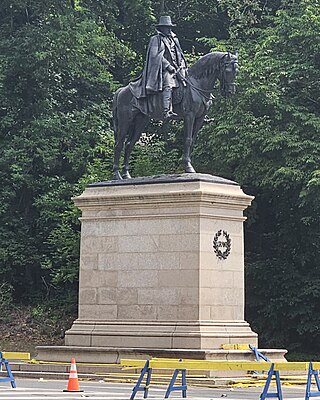
The equestrian statue of Ulysses S. Grant is a public monument in Philadelphia, Pennsylvania, United States. Located in Fairmount Park, the monument honors Ulysses S. Grant, who served as a general in the Union Army during the American Civil War and later as President of the United States. The monument was designed by Daniel Chester French and Edward Clark Potter and consists of an equestrian statue atop a pedestal. The statue was dedicated in 1899.

The Bigelow Monument is a public monument in Worcester, Massachusetts, United States. The monument, located in a small cemetery at the center of Worcester Common, honors Timothy Bigelow, a Patriot during the American Revolutionary War. The monument was dedicated on April 19, 1861, the 86th anniversary of the start of the war.

Marquis de Lafayette is a monumental statue on the campus of Lafayette College in Easton, Pennsylvania. The statue, designed by Daniel Chester French and standing on a pedestal designed by Henry Bacon, was dedicated in 1921 in honor of the college's namesake, Gilbert du Motier, Marquis de Lafayette. The statue is located at the south entrance of Colton Chapel. It is one of a number of sculptures made by French for universities, which includes the statue of John Harvard at Harvard University and Alma Mater at Columbia University.

Commodore George Hamilton Perkins is a public memorial that stands on the grounds of the New Hampshire State House in Concord, New Hampshire, United States. The statue was designed by sculptor Daniel Chester French, with architect Henry Bacon designing the remainder of the public monument. It honors George H. Perkins, a New Hampshire native who had served as an officer in the United States Navy during the American Civil War. The statue was dedicated in 1902.


